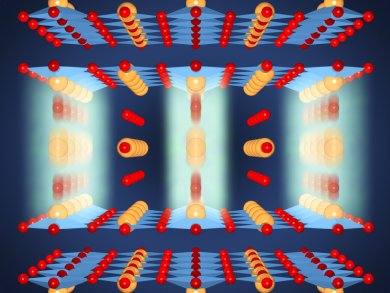Superconductors can transport electric current without any resistance. For this puropse, the materials must be cooled to very low temperatures. Therefore, they are only in use in some niche areas, for example, as magnets for nuclear spin tomography or particle accelerators. In 2013, it was found that when YBa2Cu3O6.5 (YBCO) crystalls are irradiated with infrared laser pulses they become superconducting at room temperature for a few millionths of a microsecond.
Roman Mankowsky and Andrea Cavalleri, Max Planck Institute for the Structure and Dynamics of Matter, Hamburg, Germany, and colleagues have now been able to present a possible explanation of the effect.
In the YBCO crystal thin double layers of copper oxide alternate with thicker intermediate layers which contain barium as well as copper and oxygen. The superconductivity has its origins in the thin double layers of copper dioxide where electrons can join up to form Cooper pairs. These pairs can tunnel between the different layers. The crystal only becomes superconducting below a critical temperature, as only then do the Cooper pairs tunnel not only within the double layers, but also spirit through the thicker layers to the next double layer.
Irradiation with infrared laser pulses briefly made the copper dioxide double layers thicker by two picometres and the layer between them became thinner by the same amount. This increased the quantum coupling between the double layers to such an extent that the crystal became superconducting at room temperature for a few picoseconds.
- Nonlinear lattice dynamics as a basis for enhanced superconductivity in YBa2Cu3O6.5,
R. Mankowsky, A. Subedi, M. Först, S. O. Mariager, M. Chollet, H. T. Lemke, J. S. Robinson, J. M. Glownia, M. P. Minitti,
A. Frano, M. Fechner, N. A. Spaldin, T. Loew, B. Keimer, A. Georges, A. Cavalleri,
Nature 2014, 516, 71–73.
DOI: 10.1038/nature13875


